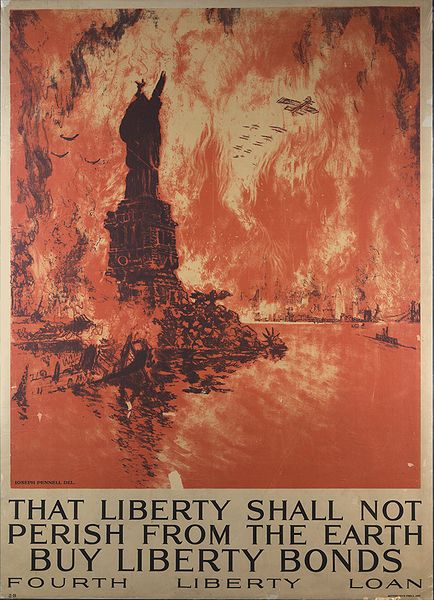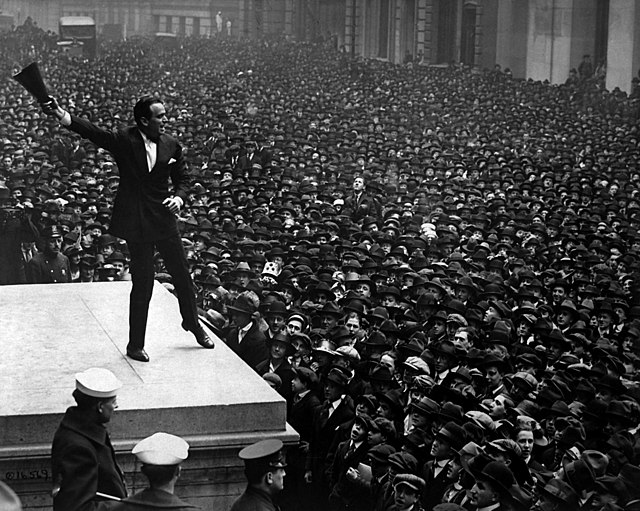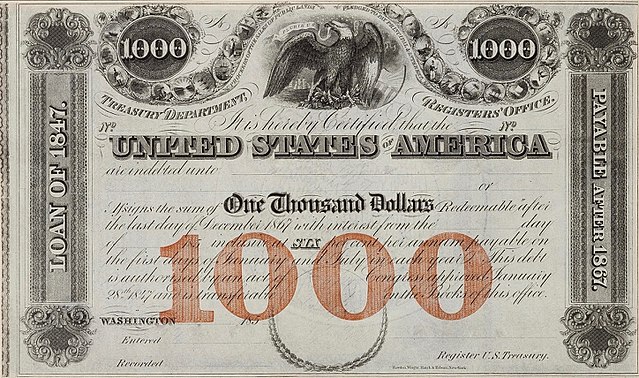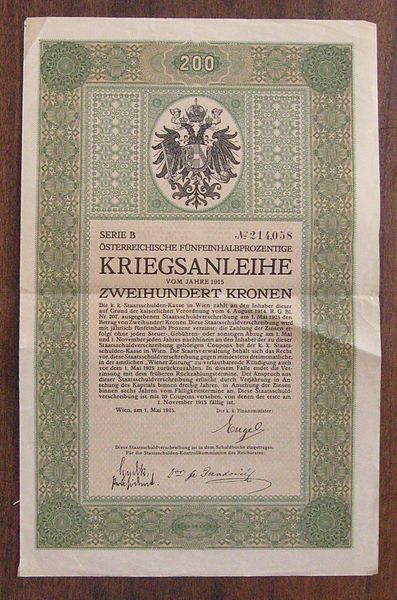A liberty bond or liberty loan was a war bond that was sold in the United States to support the Allied cause in World War I. Subscribing to the bonds became a symbol of patriotic duty in the United States and introduced the idea of financial securities to many citizens for the first time.
1918 $50 4.25% First Liberty Loan
Joseph Pennell's poster That Liberty Shall Not Perish from the Earth (1918)
1917 poster using the Statue of Liberty to promote the purchase of bonds
Douglas Fairbanks, movie star, speaking to a large crowd in front of the Sub-Treasury building, New York City, to aid the third Liberty Loan, in April 1918
War bonds are debt securities issued by a government to finance military operations and other expenditure in times of war without raising taxes to an unpopular level. They are also a means to control inflation by removing money from circulation in a stimulated wartime economy. War bonds are either retail bonds marketed directly to the public or wholesale bonds traded on a stock market. Exhortations to buy war bonds have often been accompanied by appeals to patriotism and conscience. Retail war bonds, like other retail bonds, tend to have a yield which is below that offered by the market and are often made available in a wide range of denominations to make them affordable for all citizens.
United Kingdom national war bond advertisement (1918)
$1000 U.S. government loan for the Mexican–American War
"And You?" Austrian poster promoting war bonds (1917)
An Austrian war bond (1915)








